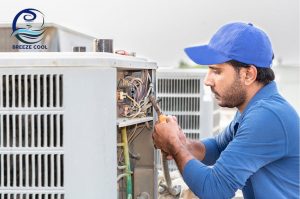
Cool rooms, also known as temperature-controlled environments, are specialized spaces designed to maintain specific temperature conditions for various purposes. From storing perishable goods to conducting scientific research, cool rooms play a crucial role in industries where temperature control is essential. In this article, we’ll delve into the world of cool rooms, exploring their applications, design considerations, and benefits.
Understanding Cool Rooms
Cool rooms are enclosed spaces equipped with temperature control systems that allow for precise regulation of temperature levels. These environments are used in a wide range of industries and applications, including food storage and preservation, pharmaceuticals, biotechnology, medical research, electronics manufacturing, and agriculture. Cool rooms are designed to protect sensitive products, materials, or equipment from temperature fluctuations that could compromise their quality, safety, or functionality.
Applications of Cool Rooms
Food Storage and Preservation
Cool rooms are widely used in the food industry for storing perishable goods such as fruits, vegetables, dairy products, meats, and seafood. By maintaining low temperatures, cool rooms slow down the growth of bacteria and other microorganisms, extending the shelf life of food items and preserving their freshness and quality.
Pharmaceuticals and Biotechnology
In the pharmaceutical and biotechnology industries, cool rooms are utilized for storing temperature-sensitive drugs, vaccines, biological samples, and reagents. These environments help maintain the stability and efficacy of medications and biological materials, ensuring compliance with regulatory requirements and patient safety.
Medical Research and Laboratories
Cool rooms are essential for medical research and laboratory settings where precise temperature control is necessary for experiments, tests, and analyses. These environments provide stable conditions for conducting research on cell cultures, enzymes, proteins, and other biological substances.
Electronics Manufacturing
Cool rooms are utilized in electronics manufacturing facilities for storing and testing electronic components, semiconductor devices, and precision instruments. Controlled temperatures help prevent overheating, thermal stress, and performance degradation in sensitive electronic equipment.
Agriculture and Horticulture
In agriculture and horticulture, cool rooms are used for storing seeds, bulbs, cuttings, and other plant materials that require specific temperature conditions for germination, preservation, or dormancy. These environments facilitate seed storage, propagation, and preservation efforts in controlled conditions.
Design Considerations for Cool Rooms
Temperature Range
The temperature range required for a cool room depends on the specific application and the products or materials being stored or processed. Cool rooms may operate at temperatures ranging from refrigeration (2°C to 8°C) to cold storage (-2°C to 2°C) or even freezing (-20°C to -30°C or lower).
Insulation
Effective insulation is essential for minimizing heat transfer and maintaining stable temperatures within the cool room. Insulation materials such as expanded polystyrene (EPS), polyurethane foam, or vacuum insulation panels (VIPs) are used to create a thermal barrier between the interior and exterior environments.
Temperature Control Systems
Cool rooms are equipped with temperature control systems that allow for precise regulation of temperature levels. These systems may include refrigeration units, evaporators, condensers, thermostats, temperature sensors, and electronic controls to maintain desired temperature setpoints.
Air Circulation
Proper air circulation is necessary to ensure uniform temperature distribution within the cool room. Ventilation systems, fans, and air ducts are used to circulate cold air and prevent temperature gradients that could lead to hot spots or cold spots.
Humidity Control
In addition to temperature control, some cool rooms may require humidity control to prevent moisture buildup, condensation, or mold growth. Dehumidifiers, humidifiers, and desiccants may be employed to maintain optimal humidity levels for specific applications.
Benefits of Cool Rooms
Preservation of Product Quality
Cool rooms help preserve the quality, freshness, and nutritional value of perishable goods such as food, pharmaceuticals, and biological samples by minimizing spoilage, degradation, and microbial growth.
Extended Shelf Life
By slowing down the degradation processes, cool rooms extend the shelf life of products, reducing waste and maximizing profitability for businesses in the food, pharmaceutical, and agricultural sectors.
Regulatory Compliance
Cool rooms help ensure compliance with regulatory requirements and industry standards for product storage, handling, and distribution, particularly in highly regulated industries such as food, pharmaceuticals, and healthcare.
Enhanced Efficiency and Reliability
Cool rooms provide stable and controlled environments for storing or processing temperature-sensitive materials, enhancing the efficiency, reliability, and consistency of production processes and research activities.
Cost Savings
Despite the initial investment in construction and equipment, cool rooms offer long-term cost savings by reducing product losses, minimizing energy consumption, and optimizing operational efficiency.
Conclusion
Cool rooms play a critical role in maintaining temperature-controlled environments for various industries and applications, from food storage and pharmaceuticals to electronics manufacturing and medical research. By providing precise temperature control, insulation, air circulation, and humidity management, cool rooms help preserve product quality, extend shelf life, ensure regulatory compliance, and enhance operational efficiency and reliability. As technology continues to advance, the role of cool rooms in supporting critical processes and innovations will only continue to grow, making them indispensable assets for businesses and organizations worldwide.
